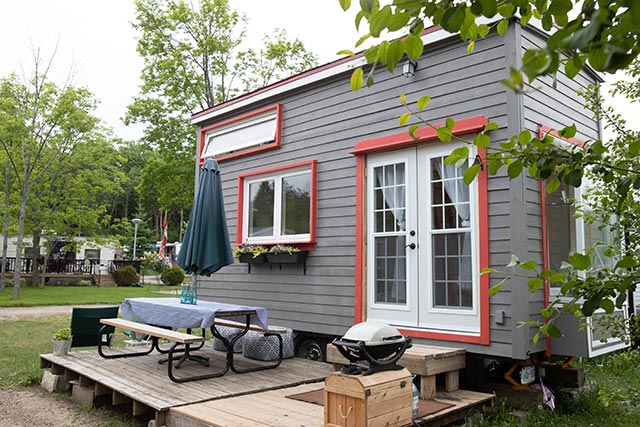 Parler
Parler Gab
Gab
- Micro-units (under 441 sq. ft.) now make up 2.4 percent of new U.S. rentals – double the share from the early 2000s – driven by affordability and urban density needs.
- West Coast cities like San Francisco (15 percent micro-units) and Seattle (66 percent of new rentals) lead the trend, while Honolulu (27 percent) and Minneapolis (10.4 percent) also embrace tiny units due to land constraints and demand.
- Micro-housing offers steep rent discounts (e.g., Newark: 50 percent cheaper) but raises concerns about cramped living, reduced amenities (e.g., shared kitchens) and potential health/social risks (e.g., claustrophobia, domestic strife).
- Zoning laws (minimum unit sizes, parking mandates) and public stigma hinder micro-housing development, despite its potential as a dignified solution for budget-conscious residents.
- Architects stress the need for compact yet livable spaces with shared amenities (e.g., kitchens, lounges), requiring careful management and resident cooperation to maintain functionality.
The double-edged sword of micro-housing
However, critics argue that while these compact units offer affordability and density, they also have unintended consequences. For instance, Brad Hargreaves, founder and editor-in-chief at Thesis Driven, argued that while "micro-housing can and should be a part of the housing market," regulatory barriers often prevent their widespread adoption. "Regulatory constraints put limits on how affordable they can really be. SRO-style units with shared kitchens are even harder to build, but in many micro-units, the legally required kitchen and appliances – which often get very limited use by micro-apartment residents – take up a huge percentage of the unit and drive up construction costs," Hargreaves said. David Neiman, partner at Neiman Taber Architects, echoed a similar stance in a separate statement. "The biggest challenges are often regulatory. Many zoning codes still assume that 'bigger is better' and impose minimum unit sizes, maximum occupancy limits or onerous parking requirements that make micro-housing infeasible. There can also be public resistance — people often associate small units with transience or decline, when in fact micro-housing can be a thoughtful, dignified solution for people who simply need a smaller footprint and a lower rent. For a designer, the challenge is creating spaces that are compact but still feel livable, with good daylight, sound separation and access to generous shared amenities that supplement the private units. From an operations perspective, there are a lot of common areas to manage and maintain. Keeping common kitchens clean and stocked and in good working order is a challenge for management and requires good citizenship from the residents," Neiman said. Visit Collapse.news to read more stories related to America's collapsing housing market. Watch this episode of "Flyover Conservatives" as host Colton Whited interviews financial expert Kirk Elliot about the exploding mortgage rates in the United States. This video is from the Flyover Conservatives channel on Brighteon.com.More related stories:
Mortgage rates surge to 20-year high, causing massive drop in home sales. BAD NEWS for home buyers: U.S. house mortgage rates SKYROCKET to HIGHEST level in two decades. Interest rate for 30-year fixed mortgage rises to 8.45% – the highest it has been since 2000. Sources include: YourNews.com StorageCafe.com Brighteon.comUnemployment rates spike in Democrat-led states as residents flee liberal strongholds
By Laura Harris // Share
By Finn Heartley // Share
AI’s job “bloodbath”: A CEO’s dire prediction for office work as we know it
By Willow Tohi // Share
Gold vs. Bitcoin: Why precious metals offer true financial privacy
By Finn Heartley // Share
Provoking Armageddon: How western elites seek nuclear war to mask imminent financial collapse
By Finn Heartley // Share
Tech giant Microsoft’s Russian subsidiary files for BANKRUPTCY
By Ramon Tomey // Share
Governments continue to obscure COVID-19 vaccine data amid rising concerns over excess deaths
By patricklewis // Share
Tech giant Microsoft backs EXTINCTION with its support of carbon capture programs
By ramontomeydw // Share
Germany to resume arms exports to Israel despite repeated ceasefire violations
By isabelle // Share









